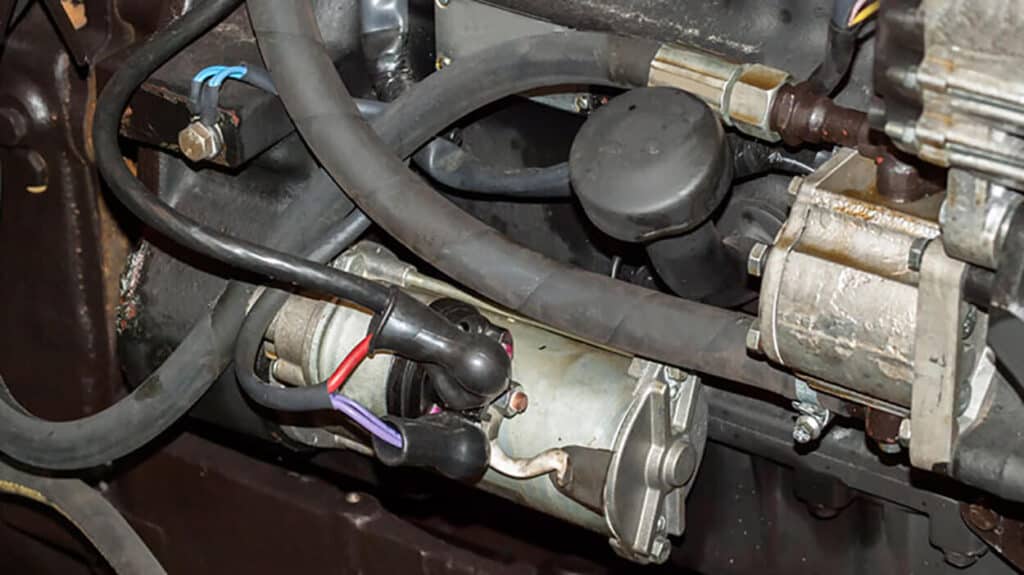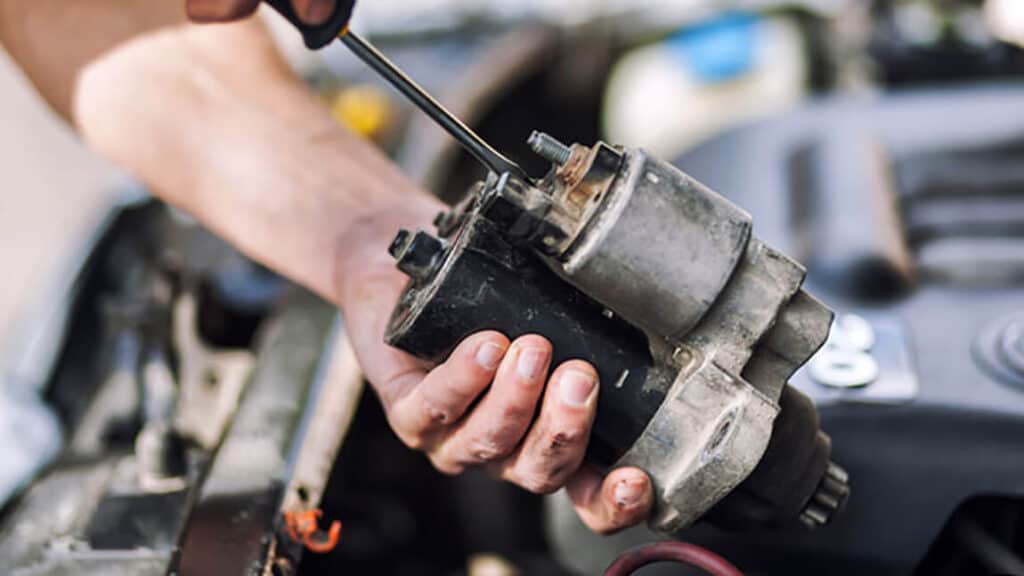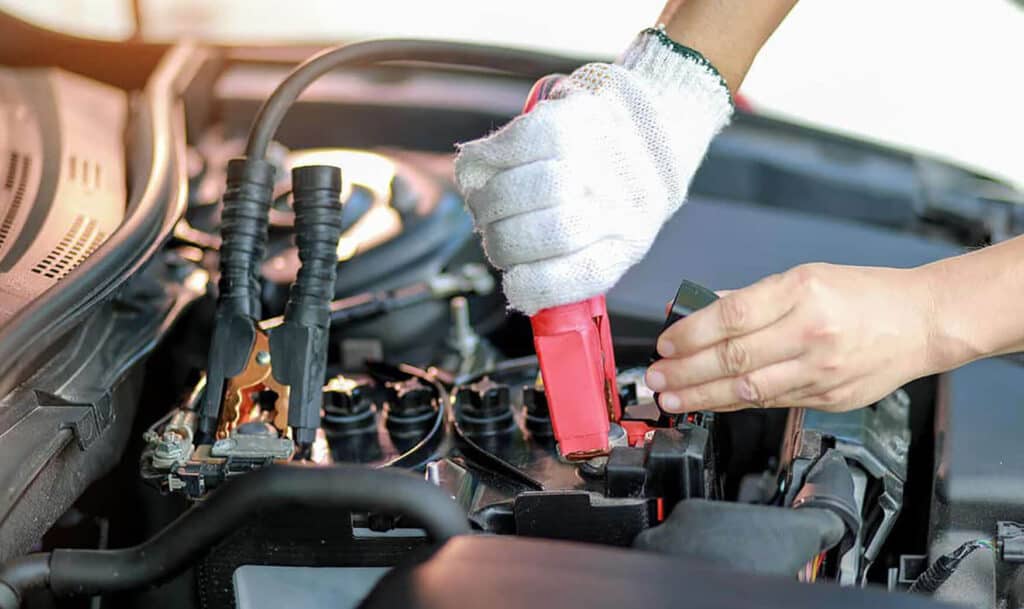Introduction: Understanding the Dangers of Driving with a Bad Starter Motor
Picture this: you’re cruising down an Ontario highway, the radio blaring your favorite tunes when suddenly, your car starts acting funny. It’s stalling, sputtering, and seems on the verge of quitting right there in the middle of the road. If you’re lucky enough, the culprit might be a bad starter motor. Driving with a bad starter motor can be risky, making it essential to recognize and address the issue promptly.
Assessing the Risks: Problems Caused by a Failing Starter Motor
Driving with a faulty starter motor is a bit like walking on a tightrope without a safety net. It’s risky, unpredictable, and can lead to some pretty scary situations. For instance, a failing starter can cause your engine to behave erratically or refuse to start altogether. It’s like playing a high-stakes game of car roulette, where the wheel of fortune can land on anything from sporadic engine failures to complete non-starters.
Worse still, the problems don’t just stop at your starter motor. Oh no, they’re just getting started (no pun intended). A faulty starter motor can have a domino effect, causing potential damage to your flywheel or even your entire electrical system. Imagine if the vital organs in your body stopped working one by one, that’s essentially what’s happening to your car. The resulting damage can transform a minor repair into a major cost, with bills that would make your wallet cringe.

And let’s not forget the worst-case scenario: being left stranded. Picture this: you’re in the middle of a busy highway or a deserted road, and your vehicle refuses to start. Not the best place to be, right? So, take our advice, and don’t gamble with a faulty starter.
On-the-Road Precautions: What to Do When Your Starter Motor Fails While Driving
Okay, so your starter motor has decided to throw a fit while you’re driving. Now what? First, let’s take a deep breath. Panicking never solved anything, right? Here’s your game plan:
The first step is to guide your vehicle to the side of the road, just like a tired horse retiring after a long day’s work. Ensure you’re safely out of traffic’s way to avoid any potential collisions. Remember, safety first!
Once you’ve secured your vehicle and yourself, you can attempt to coax your car back to life. Try starting it again, perhaps it was just a momentary hiccup. However, if your car remains stubborn and refuses to start, it’s time to bring in the cavalry. Don’t be shy about calling for professional help – hey, we all need a helping hand now and then!
Emergency Measures: How to Start a Car with a Bad Starter Motor
Just like you would do CPR to save a person’s life, there are emergency measures you can take to resurrect a car with a bad starter. Enter the magical process of “jump starting.” Here’s how it works:
Imagine your vehicle’s battery is a tired runner, barely able to stand, let alone run a race. Now picture a robust, healthy runner (which represents another vehicle’s battery). By using jumper cables, you’re effectively connecting these two runners, allowing the robust runner to lend some of its energy to the tired one.
Connect your vehicle’s battery to another vehicle’s battery using these cables, then start the other vehicle. This should give your car the boost it needs to come back to life. Remember, though, this isn’t a permanent solution – it’s a quick fix designed to get you out of a bind. Eventually, you’ll need to address the underlying issue, unless you want to risk being stuck in a “jumper cable loop” for eternity!

Taking Action: How to Manage a Bad Starter Situation
Is your car exhibiting the classic symptoms of a failing starter? Sluggish cranking, disconcerting clicking noises, intermittent start failures — these are your car’s desperate pleas for help, its SOS signals. The key is not to ignore these signs, but rather take immediate action.
Think of it as a relationship. If your significant other started showing signs of distress, you wouldn’t just ignore them and hope they’d go away, right? You’d address the problem, have a heart-to-heart conversation, and try to find a solution. Your car is no different.
As soon as your vehicle starts showing signs of starter distress, it’s time to get it checked out by a professional. This isn’t the time for DIY YouTube tutorials or a “wait and see” approach. Ignoring the issue won’t make it go away. Instead, it’ll likely snowball into something far more severe and far more expensive. So, play it smart, consult with a pro and nip the issue in the bud before it blossoms into a full-blown financial disaster.
Understanding the Ripple Effect: Can a Bad Starter Drain a Battery While Driving?
You bet it can! In fact, a bad starter draining your battery while driving is about as likely as a toddler devouring a piece of cake left within reach. The faulty starter, like the sugar-crazed toddler, can’t resist the lure.
Here’s how it works: a malfunctioning starter can continue running even after your engine has started, effectively leeching power from your battery. It’s like a power-hungry vampire, slowly but surely draining your battery’s life force.
Remember, your battery has a hard enough job powering all your car’s electrical systems. The added burden of a bad starter can leave it depleted and struggling to perform its essential functions. So, if you suspect your starter is the culprit behind your constantly drained battery, get it checked out pronto! Don’t let the energy vampire continue to feast on your poor battery.
Recognizing the Signs: What Happens When Your Starter Blows?
Picture this: You’re all set for a road trip. Snacks? Check. Playlist? Check. Sunglasses? Check. You slide into the driver’s seat, key in the ignition, ready to hit the road, and… nothing. Your car doesn’t start. Or worse, it greets you with a cacophony of grinding and clanking noises like a symphony of automotive despair.
Sounds like a nightmare, right? Well, that’s exactly what could happen when your starter blows.

Starter failure can manifest in a few ways, each more alarming than the last. Some vehicles might experience intermittent starting issues. You know, the kind where it seems like your car is playing an infuriating game of chance, choosing random moments not to start.
In other cases, your car might not start at all, proving as stubborn as a mule refusing to budge. And then there are those alarming sounds — the grinding, the clanking — like your car’s personal way of screaming in frustration.
All these symptoms point to one thing: a blown starter. It’s like your car’s version of a dramatic opera, complete with its own tragic sound effects. The key here is recognizing these signs early and seeking immediate professional assistance to avert a potential vehicular tragedy.
Conclusion: Prioritizing Safety in the Face of Starter Motor Problems
Driving with a bad starter motor is a game of Russian roulette – you never know when it’ll leave you stranded. So, prioritize your safety and take action at the first signs of trouble. And remember, your friendly neighborhood mobile mechanic from Uchanics is always ready to help! Don’t be stuck in a rut; let us help you keep your vehicle running smoothly and safely.
